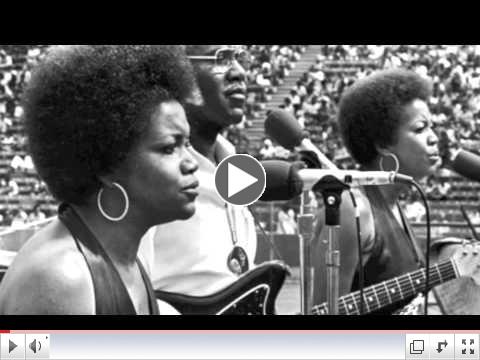 | The Staple Singers
A Hard Rain's Gonna Fall |
|

NEW CCDS Pamphlet
on Climate Change.
|
Blog of the Week...

|

New CCDS Book Reporting on Vietnam
|
|
Radical Jesus:
A Graphic History of Faith 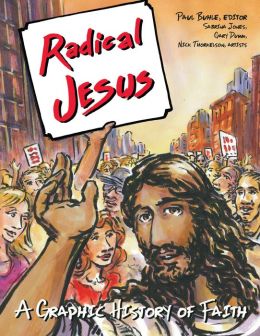 By Paul BuhleHerald Press By Paul BuhleHerald Press
|

Want to Know what CCDS has
been doing...Check it Out!
|
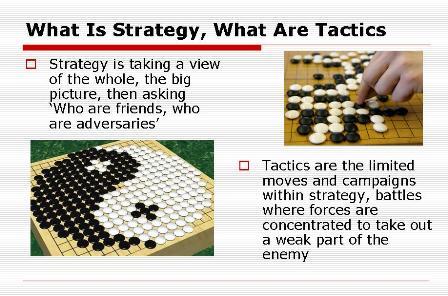 Keep On Keepin' On Keep On Keepin' OnHating the 'Middle Class,' Why Socialists Run in Elections, Strategy and Tactics Slide Slow, Class and Privilege, the Green New Deal ...and other Short Posts on Tumblr by Carl Davidson
|

Edited by Carl Davidson Revolutionary Youth and the New Working Class: The Praxis Papers, the Port Authority Statement, the RYM Documents and other Lost Writings of SDS Changemaker, 273pp, $22.50
For the full contents, click the link and view 'Preview' under the cover graphic.
|
|
By Randy Shannon, CCDS

"Everyone has the right to work, to free of employment, to just and favorable conditions of work and to protection against unemployment."
- United Nations Universal Declaration of Human Rights, December 10, 1948
I. Introduction
The "Great Recession" that began in 2007 has caused the greatest percent of job losses since the Great Depression of 1929. This crisis is the end of an era of unrestrained 'neo-liberal' capitalism that became public policy during the Reagan administration. The crisis marks a new level of instability with the growth of a global financial elite that targeted US workers and our trade unions after World War II.
|
|
Order Our
Full Employment Booklets
 |
 The new annual edition of our journal of discussion and analysis is now out. More than 170 pages, it includes 14 articles on strategy austerity, organizing, and the right. Cost is $10 plus shipping. Or get one by becoming a sustainer. Click the title to buy it directly. The new annual edition of our journal of discussion and analysis is now out. More than 170 pages, it includes 14 articles on strategy austerity, organizing, and the right. Cost is $10 plus shipping. Or get one by becoming a sustainer. Click the title to buy it directly.
|
...In a new and updated 2nd Edition
Capitalism may well collapse under its own excesses, but what would one propose to replace it? Margaret Thatcher's mantra was TINA...There Is No Alternative. David Schweickart's vision of "Economic Democracy" proposes a serious alternative. Even more fundamentally, it opens the door to thinking about alternatives. His may or may not turn out to be the definitive "successor system," but he is a leader in breaking out of the box. |
 by Paul KrehbielAutumn Leaf Press, $25.64
by Paul KrehbielAutumn Leaf Press, $25.64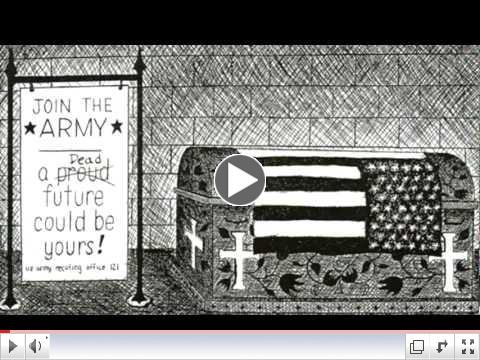 | | Shades of Justice Video: Bringing Down a President, Ending a War |
|
 By Giuseppe Fiori
Verso, 30 pages
|

Essays on Mondragon, Marx, Gramsci
and the Green and Solidarity Economies |
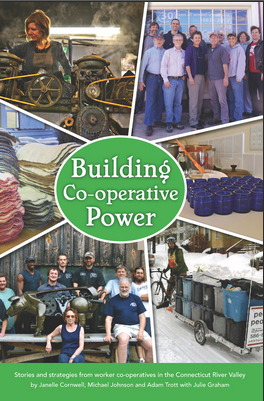
The Story of Workers Coops
in the Connecticut River
Valley Today.
Coauthors: Janelle Cornwell
(Worcester State University),
Michael Johnson (Grassroots
Economic Organizing Newsletter)
and Adam Trott (Valley Alliance
of Worker Co-operatives and
Collective Copies)
|

- Foreword by Susan Brownmiller
- Preface by Ken Wachsberger
$37.50 + $6 shipping
|
|
Discussion Documents for a Militant Movement
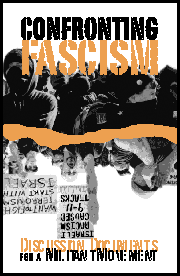
By Don Hamerquist
|
|
|
|
An Invitation to CCDSers and Friends...
 US Legitimacy: US Legitimacy:
How the Cookies
Are Crumbling
We're the Committees of Correspondence for Democracy and Socialism...Do you have friends who should see this? Pass it on...Do you have a blog of your own? Others you love to read every day? Well, this is a place where you can share access to them with the rest of your comrades. Just pick your greatest hits for the week and send them to us at carld717@gmail.com!
Most of all, it's urgent that you support low-wage workers, oppose militarized police, the war on Gaza, defend voter rights, plan for 2014 races now, oppose austerity, support the 'Moral Mondays' in North Carolina, the fight for the Green New Deal, a just immigration policy and the Congressional Progressive Caucus' 'Back to Work Budget'! We're doing more than ever, and have big plans. So pay your dues, make a donation and become a sustainer. Do it Now! Check the link at the bottom... |
The Police in America Are Becoming Illegitimate

Undercover cop, after acting as provocateur, aims at Berkeley protestors
The crooked math that's going to crash American law enforcement if policies aren't changed By Matt Taibbi
Rolling Stone
Dec 5, 2014 - Nobody's willing to say it yet. But after Ferguson, and especially after the Eric Garner case that exploded in New York yesterday after yet another non-indictment following a minority death-in-custody, the police suddenly have a legitimacy problem in this country.
Law-enforcement resources are now distributed so unevenly, and justice is being administered with such brazen inconsistency, that people everywhere are going to start questioning the basic political authority of law enforcement. And they're mostly going to be right to do it, and when they do, it's going to create problems that will make the post-Ferguson unrest seem minor.
The Garner case was a perfect symbol of everything that's wrong with the proactive police tactics that are now baseline policy in most inner cities. Police surrounded the 43-year-old Garner after he broke up a fight. The officers who responded to that call then decided to get in Garner's face for the preposterous crime of selling "loosies," i.e. single cigarettes from a pack.
When the police announced that they were taking him in to run him for the illegal tobacco sale, Garner balked and demanded to be left alone. A few minutes later he was in a choke hold, gasping "I can't breathe," and en route to fatal cardiac arrest.
On the tape you can actually hear the echo of Garner's years of experience with Broken Windows-style policing, a strategy based on a never-ending stream of small intrusive confrontations between police and residents in target neighborhoods.
The ostensible goal of Broken Windows is to quickly and efficiently weed out people with guns or outstanding warrants. You flood neighborhoods with police, you stop people for anything and everything and demand to see IDs, and before long you've both amassed mountains of intelligence about who hangs with whom, and made it genuinely difficult for fugitives and gunwielders to walk around unmolested.
You can make the argument that the policies work, as multiple studies have cited "hot spot" policing as a cause of urban crime-rate declines (other studies disagree, but let's stipulate).
But the psychic impact of these policies on the massive pool of everyone else in the target neighborhoods is a rising sense of being seriously pissed off. They're tired of being manhandled and searched once a week or more for riding bikes the wrong way down the sidewalk (about 25,000 summonses a year here in New York), smoking in the wrong spot, selling loosies, or just "obstructing pedestrian traffic," a.k.a. walking while black.
This is exactly what you hear Eric Garner complaining about in the last moments of his life. "Every time you see me, you want to mess with me," he says. "It stops today!"
This is the part white Middle American news audiences aren't hearing about these stories. News commentators like the New York Post's Bob McManus ("Blame Only the Man Who Tragically Decided to Resist"), predictably in full-on blame-the-victim mode, are telling readers that the mistake made by Eric Garner was resisting the police in a single moment of obstinacy over what admittedly was not a major offense, but a crime nonetheless. McManus writes:
He was on the street July 17, selling untaxed cigarettes one at a time - which, as inconsequential as it seems, happens to be a crime.
The press and the people who don't live in these places want you to focus only on the incidents in question. It was technically a crime! Annoying, but he should have complied! His fault for dying - and he was a fat guy with asthma besides! ...(Click title for more)
|
|

By Frank Chapman
National Alliance Against Racism and Political Repression
What does this spontaneous uprising of the masses tell us and how does it relate to our historic struggle for community control of the police?
Of course the most obvious place to start is that this mass uprising is the manifestation of a new awakening of the people to the gross racist injustices that exist in our country.
But isn't it also a break away from the slavish submission to police and government authorities on the question of racist repression? This uprising is an expression of the mistrust created by an unjust and broken criminal justice system. Spontaneous movements by their very nature are not consciously based on an understanding of the necessity of collective resistance to bring about systemic changes.
The present protest arise out of anger and outrage, their initial stages are outbursts characterized more by desperation and disgust than by organized struggle. At least this is how it seemingly jumped off in Ferguson on a hot day in August.
First the revolts that began in Ferguson were clearly the resistance of African Americans to racist repression and its underlying oppression. In fact it is so obvious to so many that the Black people of Ferguson were justly outraged. How else can one explain the mass outpouring of support from all strands of the peoples' progressive movement in the United States and around the world?
When the oppressed at the bottom of the social ladder rattle their chains everyone takes notice. Simultaneous with the Ferguson uprising was a spontaneous movement of solidarity coming from the organized and unorganized, from masses of youth in the streets, to militant African American organizations, civil rights groups, labor unions, LGBTQ groups, youth and student organizations the organized left and peace and solidarity movements. Those of us who have lived through and were a part of the African American rebellions of the sixties know from experience that the present uprising has a greater depth and breadth than anything we've ever seen.
Now in the wake of the grand jury refusing to indict the cops that killed Eric Garner we see a nation-wide youth led, protest/resistance movement developing with the potential of interrupting business as usual and confronting local and national authorities about doing away with the current racist practices of local police departments and prosecutors.
However, this does not mean that the spontaneous awakening to the need to engage in political struggle is comparable to the sixties. The fight to end Jim Crow, the U.S. legalized version of Apartheid, was clearly a political struggle implying a radical transformation, an institutional rearrangement of society based on racial equality.
The present protestors, while calling for the criminal justice system to hold the police accountable, also realize that they cannot depend on prosecutors to prosecute police. So it is clear that the system needs overhauling and those prosecutors, judges, and politicians are definitely not agents of change for the better. The paradox is clear. We are asking the worm to investigate his tail. We are asking the perpetrators of injustice for justice. What is the solution?
The solution is a democratic one. We the people, the victims and survivors of police crimes, united with the broader democratic forces of the people must organize a massive campaign for an elected Civilian Police Accountability Council (CPAC) that empowers the people to hold the police accountable for the crimes they commit; puts communities in control of policing policies and procedures....(Click title for more)
|
By Jamala Rogers
Black Commentator
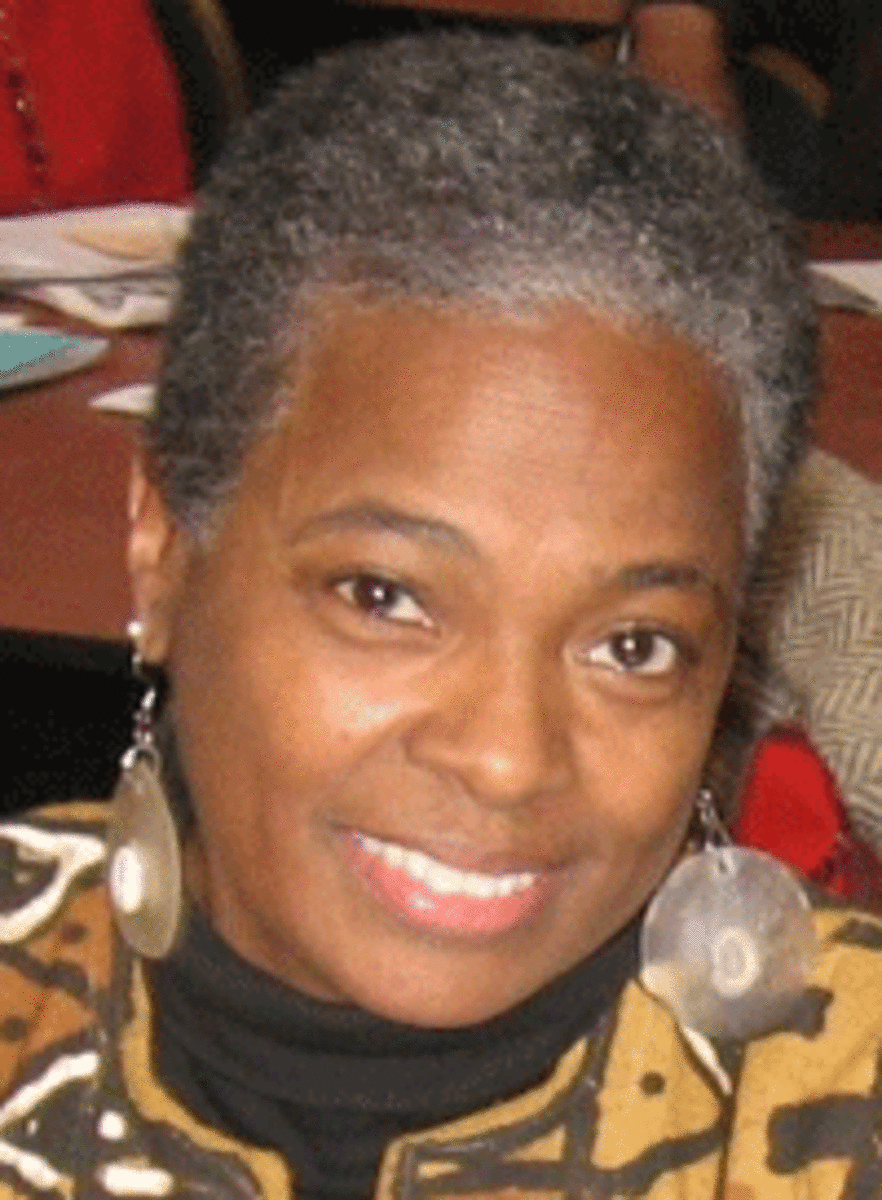 This communique is not for the white trolls who lurk in the social media shadows, throwing racist, anonymous potshots, or the white people who've been publicly expressing that African Americans are savages who deserve to be shot down in the streets. This communique is not for the white trolls who lurk in the social media shadows, throwing racist, anonymous potshots, or the white people who've been publicly expressing that African Americans are savages who deserve to be shot down in the streets.
This column is for white people who are genuinely bewildered as to why people have been in the streets for 100-plus days in Ferguson and around the globe since Mike Brown's death. This is for whites who are desperately trying to figure out how they can fit into the transformational shift for racial justice that is now being recalibrated.
Race has been made complicated, but it's a sociological construct, designed by the white ruling elite generations ago for the main purpose of exploitation and control. Your racial isolation has been intentionally choreographed to minimize racial understanding that could lead to multi-racial unity.
You have been fed an unhealthy diet of white supremacy that requires you to embrace the belief that all non-white peoples are inferior - the darker the being, the more subhuman they are. Such a belief system is inherently problematic and unsustainable for peaceful coexistence. You have been manipulated over the centuries.
If it's any consolation, you are not alone. Non-whites have been twisted into self-hatred and manipulated into pursuing a path of whiteness, a perverted journey whose destination one can never reach. Yes, we've all been put in a trick bag. Let's acknowledge this and move on to the real challenge of building the kind of society where all potential is fully developed and all life is valued.
You need to know that your interaction with law enforcement can be dramatically different from that of black and brown people. For us, the distrust of police has a long and brutal history. Accept the preponderance of evidence of this fact or you can Google "police brutality videos." This is our reality: any black person could be Mike Brown.
In a recent article by Isabel Wilkerson, the Pulitzer Prize-winning author states the current "rate of police killings of black Americans is nearly the same as the rate of lynchings in the early decades of the 20th century." Wilkerson points to FBI data (undercounted) that show a black person is killed by a police every three or four days in the U.S. Because I'm black, this means I'm five times more likely to be killed by police than my white counterpart.
A report by the Malcolm X Grassroots Movement (MXGM) a couple of years ago took this phenomenon a step further. According to the report on extrajudicial killings, every 36 hours a black person is "executed" by police, security guards or vigilantes.
Both Wilkerson and the MXGM report underscore that people of African descent can be killed without due process, that a white person can be both judge and jury and their deadly actions are almost always justified. In order to make this justification stick, all black people must be criminalized and their deaths blamed on their own actions. Black people have a serious problem with this broad racial calculation, i.e. if you're black, you're dangerous and thereby a threat.
The loss of a child brings unspeakable grief for any family, but it just keeps on happening. The latest is the unwarranted shooting death of 12-year-old Tamir Rice, whose toy gun obviously made him a target of overzealous Cleveland police. We cannot stomach yet another cop killing of a black child with no accountability. The weight of the human carnage is too much to bear.
It is these incessant acts of terror by police in our communities over decades and without impunity that has ignited a spontaneous outrage in black people and justice-seeking allies. The righteous outrage is rooted in our countless, negative encounters with law enforcement and the courts. That is why you see millions across the nation responding to the refusal of St. Louis County Prosecutor Bob McCulloch to indict Darren Wilson for the murder of Mike Brown. Over 170 U.S. cities hosted a variety of actions, from shutting down a highway in Washington, D.C. to St. Louis Rams players doing a hands-up-don't-shoot gesture before the game....(Click title for more)
|

US facility at Guantanamo
By Amy Davidson
The New Yorker
There is a tape recording somewhere, unless the Central Intelligence Agency has destroyed it, that captures the sound of a man named Nazar Ali crying. He was a prisoner in a secret C.I.A. prison, in a foreign country where terrorists were supposed to be interrogated.
But Nazar Ali, whom a Senate Select Intelligence Committee report, part of which was released on Tuesday, suggests has a developmental disability-it quotes an assessment of him as "intellectually challenged"-was no sophisticated Al Qaeda operative. It is not even clear, from what's been released of the report, that his interrogation was an attempt to gain information, or indeed that he was properly interrogated at all. According to the report, his "C.I.A. detention was used solely as leverage to get a family member to provide information."
A footnote later in the report, where his name appears, explains that Nazar Ali's "taped crying was used as leverage against his family member." Left unexplained is what the American operatives did to make this man cry. Did they plan ahead, preparing recording equipment and proddings, or did they just, from their perspective, get lucky?
That audio may be long erased or destroyed, as ninety-two videotapes documenting waterboarding were. The unauthorized running of those videotapes through an industrial shredder, in 2004, put in motion the production of the Senate report. (The Washington Post has a graphic guide to its twenty key findings.) It took nine years and cost forty million dollars, largely because the C.I.A. and its allies pushed back, complaining about unfairness and, finally, warning darkly that Americans would die if the world knew what Americans had done. Senate Republicans eventually withdrew their staff support.
The Obama Administration has largely enabled this obstruction. The opponents of accountability nearly succeeded. In another month, a Republican majority takes control in the Senate, and they might have buried the report for another decade, or forever. As it is, only a fraction has been released-the five-hundred-page executive summary of a sixty-seven-hundred-page report-and it is shamefully redacted.
But there are things the redactions can't hide, including that the C.I.A. and the Bush Administration lied, in ways large and small. One telling example has to do with the number of people held in the secret C.I.A. prisons. General Michael Hayden, as director of the C.I.A., regularly said that the number was "fewer than a hundred." By that, he meant ninety-eight-and, when he was informed by others in the Agency that there were at least a hundred and twelve, "possibly more," he insisted that they keep using the number ninety-eight. The report released today lists the number, for the first time, as a hundred and nineteen. Of those, twenty-six were held wrongly-that is the C.I.A.'s own assessment; the number may be greater-either because there was no real evidence against them or because of outright Hitchcockian cases of mistaken identity.
There's a footnote where the report mentions the twenty-six who "did not meet the standards for detention." Footnote 32, the same one that outlines the motives for holding Nazar Ali, has a devastating litany, starting with "Abu Hudhaifa, who was subjected to ice water baths and 66 hours of standing sleep deprivation before being released because the CIA discovered he was likely not the person he was believed to be," and including many others, such as,
Gul Rahman, another case of mistaken identity.... Shaistah Habibullah Khan, who, like his brother, Sayed Habib, was the subject of fabrications.... Haji Ghalgi, who was detained as "useful leverage".... Hayatullah Haqqani, whom the CIA determined "may have been in the wrong place at the wrong time".... Ali Jan, who was detained for using a satellite phone, traces on which "revealed no derogatory information".... Two individuals-Mohammad al-Shomaila and Salah Nasir Salim Ali-on whom derogatory information was "speculative".... and Bismullah, who was mistakenly arrested ... and later released with $[redacted] and told not to speak about his experience.
The image of the footnote, below, gives a sense of both the scope of what went wrong and what we still don't know; it is riddled with redactions.
What is also disturbing is what the C.I.A. didn't know, or ignored. According to the report, "In December 2003, a CIA Station overseeing CIA detention operations in Country [redacted] informed CIA Headquarters that it had made the 'unsettling discovery' that the CIA was 'holding a number of detainees about whom' it knew 'very little.' " The report notes that at two sites, called Cobalt and Gray in the report, there were, for certain periods, almost no detailed records-and that, on the whole, the records got less detailed as time went on. ...(Click title for more)
|
Congressional Staffers: 'Hands Up! Don't Shoot!'
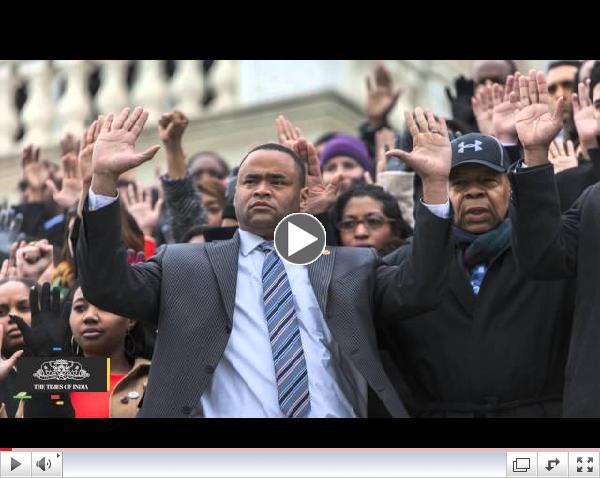 | |
U.S. Congressional Staffers Stage Walkout in Latest Police Protests
|
|
UAW Formally Recognized at
Volkswagen Plant in Tennessee
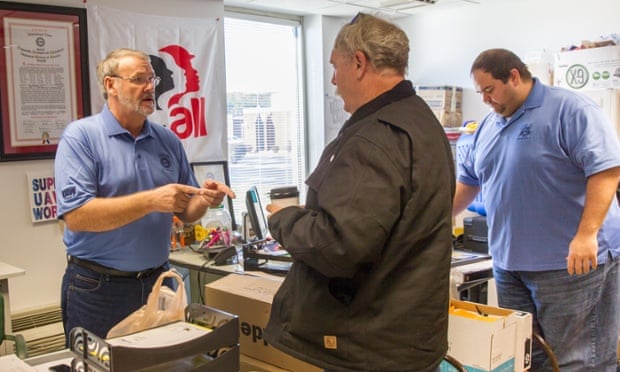
Union passed 45% threshold following audit of union members, but failed to reach the 50% mark that would give it exclusive bargaining rights. United Auto Workers local 42 president Mike Cantrell, left, speaks to fellow Volkswagen employees at the union's office in Chattanooga.United Auto Workers local 42 president Mike Cantrell, left, speaks to fellow Volkswagen employees at the union's office in Chattanooga. Photograph: Erik Schelzig/AP By Amanda Holpuch
The Guardian / UK
Dec 9, 2014 - The United Auto Workers union has for the first time been recognised at a foreign-owned car factory in the American south.
UAW was certified to represent at least 45% of Volkswagen workers at its Chattanooga auto plant in Tennessee following an audit of union membership. This ends a streak of UAW failures to unionize workers at foreign-owned auto plants in the US.
It also gives the UAW the ability to regularly meet with Volkswagen's management at its only factory in the US. If the union can attract at least 50% of Volkswagen workers, it will be recognized as the company's exclusive bargaining agent.
The plant employs about 1,500 blue-collar workers.
"As anticipated, we surpassed the highest level under Volkswagen's new Community Organization Engagement policy, and the local leadership is ready to move forward with additional conversations with the company," UAW secretary-treasurer Gary Casteel said in a statement.
UAW is also working to unionize a Mercedes-Benz plant and two Nissan plants in the south. The union hopes that the developments at Volkswagen will create momentum for the efforts in other states.
In February, UAW lost a vote to represent Volkswagen workers after state lawmakers, including governor Bill Haslam, threatened to rescind incentives offered to Volkswagen if a majority voted in favor of the union.
This 45% vote meets threshold standards set by Volkswagen's Community Organization Engagement labor policy. If a union attracts 15% of its auto workers, the union can use Volkswagen meeting rooms and meet with management monthly. The 30% mark allows unions to meet executives quarterly, and the 45% mark allows the unions to meet biweekly with company management and executives.
The American Council of Employees has also tried to organize Volkswagen workers in Chattanooga but has not formally applied to represent the company's workers....(Click title for more)
|
|
When it comes to providing jobs and money to towns and cities, not all renewable energy is created equal.
By Kayla Schultz
Yes! Magazine
Oct 22, 2014 - At last month's People's Climate March, among the most popular signs were ones supporting renewable energy like wind and solar as the best way to avoid a climate catastrophe. And because of the urgency of the situation, it's easy to think that we should be building up renewables as much as we can.
But, from an economic point of view, it turns out that not all renewable energy is created equal.
One main difference is between energy generators that are locally owned and ones owned by some faraway entity, and a new report from the Institute of Self-Reliance presents the details. The report, written by Senior Researcher John Farrell, makes two main points: Locally owned renewable energy projects create more economic benefits than absentee-owned projects, and they are less likely to encounter community opposition. By enacting policies to support local renewables, Farrell argues, states and counties stand to gain thousands of jobs and millions of dollars.
Farrell's report presents striking data from an earlier study by the National Renewable Energy Laboratory, which showed that wind power projects often provide twice as many jobs when they are locally owned. Farrell provides this example:
A 20-megawatt wind energy project built in Minnesota but owned by Spanish firm Iberdrola would add $20 million to the state's economy and create about 10 long-term jobs. But if that same project were owned by Minnesota farmers or Kandiyohi Power Cooperative, it would create 20 long-term jobs and generate as much as $68 million in economic activity for the state.
The benefit to a local economy depends on various aspects of a project, such as its size, location, and the amount of local labor and materials used.
Why do locally owned projects create more jobs per megawatt? The National Renewable Energy Laboratory gives three reasons: They are more likely to use local labor and materials, provide benefits to local shareholders, and borrow from local banks.
A program in 2009 made it easier for projects to grow because it cut down the need for investors who take a cut of the profits.
These economic benefits could also be the reason that neighboring communities are more likely to support renewable energy projects when they are locally owned. Farrell points to a study published in the journal Energy Policy in 2011 that looked at two German towns, each with a wind farm on its outskirts. The locally owned wind farm received far friendlier reception from neighbors than the absentee-owned wind farm.
Farrell says that seeing locally owned projects get built changes residents' impression of renewables and encourages them to think about how they can use renewable energy in their own lives.
"They realize this is real; it's not a fanciful notion," Farrell said. "People ask themselves 'I wonder if I could do that?'"
Barriers to local ownership
With all these benefits on the table, you would think local entrepreneurs would be starting up wind and solar projects across the country. Yet, in 2007, just 2 percent of wind projects in the United States were locally owned, according to the National Renewable Energy Laboratory.
It turns out that federal and state policies make it difficult for locally owned projects to get off the ground. The federal Solar Investment Tax Credit, for example, rewards developers of solar projects by lowering the amount they owe in taxes. But because the program doesn't provide any money up-front, it essentially requires entrepreneurs to have access to large amounts of capital before beginning a project....(Click title for more)
|

A Socialist Worker Interview
Journalist Anand Gopal has written from Afghanistan and other Middle East war zones for the Wall Street Journal and the Christian Science Monitor, and has reported on the Middle East and South Asia for Harper's, The Nation, The New Republic, Foreign Policy and other publications. His new book, No Good Men Among the Living: America, the Taliban and War Through Afghan Eyes is a finalist for the National Book Award.
After returning from assignment in Iraq, Anand talked to Ashley Smith of Socialist worker on Dec 10, 2014 about the situation today as the U.S. continues its new war against the Islamic State in Iraq and Syria (ISIS).
WHAT ARE conditions like in Iraq today? THE CIVIL war that the U.S. invasion helped unleash has not really ended. Rather, it continues in a different form. Pro-Iran parties dominate the government, the number of Shia militias and death squads has skyrocketed in the past six months, and large parts of central and northern Iraq are under the sway of ISIS or other Sunni insurgent groups. In Baghdad, neighborhoods remain divided. Nearly daily, Sunnis are picked up by Shia militias, and their tortured bodies are delivered to the morgue. In reprisal, Sunni insurgents wheel car bombs into crowded Shia areas, killing dozens, almost all civilians. HAS OBAMA been effective at all in his stated strategy of building unity between the elites of the Shia, Sunni and Kurdish communities in Iraq? VERY INEFFECTIVE. His administration is prioritizing a very narrow version of counter-terrorism to defeat ISIS over political reconciliation and state-building. As a result, Obama has backed the Iraqi security forces and the Iraqi army, which work hand in hand with Shia militias and Shia death squads. This has actually sharpened sectarian divisions throughout the country. For example, there's a highway running from Baghdad up to Irbil, the capital of the Kurdish regional government in northern Iraq. Before the rise of ISIS, there were Iraqi army checkpoints along this highway. Last year, ISIS swept in and took swathes of territory along this highway. The Iraqi security forces have since retaken it from ISIS, but they have allowed Shia militias to set up checkpoints to harass and repress Sunnis. The net effect over the past year is the replacement of army checkpoints with Shia militia checkpoints. When ISIS took Mosul in June, it became an excuse used by the Iraqi government to sanction new Shia militias--as a result, there have bloomed in the past six months. Driving through Baghdad, you see billboards for Iranian-backed Shia militias everywhere. There are posters of current Iranian leader Ayatollah Khamenei in many parts of the city. In many ways, these Shia militias are no different than ISIS. They behead, they torture, they kill Sunnis or anyone who disagrees with them. The difference is that the U.S. supports them, and so the media doesn't highlight their atrocities. WHAT IMPACT have these militias had on ISIS's recruitment of people from the Sunni population of Iraq? TO UNDERSTAND why ISIS has grown, you should look back to the period before the movement's current rise. For the last several years, Iraq's former Prime Minister Nuri al-Maliki led a sectarian Shia government that systematically discriminated against Sunnis. In reaction, Sunnis rose up in a protest movement in cities of Anbar province, like Ramadi and Falluja. This was initially a peaceful movement. Protesters occupied squares and erected roadblocks. They set up tent cities to protest government corruption, sectarianism and the Shia militias. Nationalist Shia cleric Moqtada al-Sadr praised the uprising and said, "An Iraqi spring is coming." The Maliki government's response was to open fire on unarmed protesters, arrest activists and raid encampment sites. In Falluja, rock-throwing protesters were gunned down. In Hawija, the army invaded a protest encampment, killing dozens and sparking clashes that led to the deaths of hundreds. It was out of the ashes of this repression that ISIS was able to grow, capitalizing on the frustration and anger many felt towards the sectarian government. Initially, ISIS was welcomed as the lesser of two evils. Many of those people now realize that ISIS is no force of liberation, but the U.S.-backed Iraqi Security Forces and Shia militias have nonetheless fueled continued resentment and allowed ISIS to still have appeal. When the Iraqi Army and militias go into villages and "clear" it of ISIS, atrocities often ensue. In Diayala, for instance, Shia militias massacred 34 Sunni civilians gathered in a mosque (video link to the massacre). In Latifiya, the militias burned down homes and beheaded civilians. In effect, the biggest recruitment tool for ISIS is the U.S.- and Iranian-backed Shia forces. WHAT IMPACT has the U.S. air war had on Iraq? ISIS HAS lost its momentum since the summer and can no longer said to be gaining ground or posing an existential threat to the central government in Baghdad. But the American air war's effect has been pretty minimal. The U.S. has struck some ISIS command centers and convoys. But in reality, the area where ISIS has lost the most ground is where the Iraqi Army and the Shia militias have come in and imposed their rule. This has mostly occurred in Shia and Kurdish areas--not in Sunni regions such as Anbar. Neither American air strikes nor the Iraqi Army nor Shia militias have succeeded in dislodging ISIS from the province. WHAT ABOUT the Kurds in Iraq and their threat to declare independence? THE U.S. has long been opposed to the Kurdish right to self-determination and independence. The Kurdish officials I've talked with made it clear that Obama's war has stymied their drive for more autonomy and independence. The U.S. elite doesn't want Iraq to disintegrate. They want the Kurdish region's oil to remain under the control of the Iraqi state. So they have made every effort to stop any further development of Kurdish autonomy....(Click title for more)
|
 Reviewed by Gregg Shotwell Reviewed by Gregg Shotwell
MRZine
'A Fighter All My Life' is the memoir of Sam Johnson, a Black man from the South who became a Detroit auto worker and dissident union activist. Johnson was born and raised on the front lines of class conflict in America. His everyday life was fraught with danger. In the tradition of the memoirs of Hosea Hudson, Malcolm X, and Big Bill Haywood, the book traces how he came to full consciousness of the roots of our oppression. He was always a fighter -- but in the United Auto Workers (UAW) he found his true calling, militant unionist, and the right target for his righteous anger, capitalism.
The book begins with anecdotes of Johnson's childhood in Alabama, coming of age under Jim Crow, and being sent in 1959 to Los Angeles, where his mother felt he would be safe from the KKK and Southern police. What a different place America was then! On a road trip back to Alabama to visit family, Johnson and his friends ran into Little Richard on a Texas highway. "Don't you guys know me? I used to perform all around through Alabama," the rock-and-roll legend said. Little Richard took them out to eat and picked up the tab.
In Los Angeles, Johnson worked various jobs, got some job training, cavorted with "a fast crowd," and had a few run-ins with the police. "I couldn't hang with where Martin Luther King and them were coming from," he writes. "I saw these guys lying on the ground, letting the racists beat on them. Unh-uh. Nah. I wasn't ready for that. I was for fighting back, turn it around."
Getting the Bigger Picture
At age 29, Johnson moved to Detroit -- just in time for the riots of 1967. New to the city, he was an observer. Afterwards he said, "So that makes you get the bigger picture. That's why I say, if there are enough of us together, they can't deal with us."
Sure enough, the auto companies started hiring black workers. "The corporations were thinking they had too many blacks in the street. They didn't want another riot -- better give them jobs." He also describes how heroin became prevalent in Detroit and in the auto plants in the late sixties and how tolerated it was by authorities and police: "Those drugs coming in helped break the militancy."
Eventually Johnson got a job at Dodge Main, where he started reading the Spark, a militant leftist newsletter. "By reading the 'Spark' and talking to people around it, I began to get a bigger picture of the U.S. system. . . ," he says. "Added to what I already understood from how I grew up, I began to see that as long as the capitalists control everything, it's going to keep getting worse for the majority of people."
The street fighter acquired focus. Johnson kicked heroin and became an elected union committeeman, and in his own words, "a revolutionary militant in the working class, trying to get other workers to see and understand what needs to be done, trying to bring workers to stand together to use the force they have":
And I always tried to give them the bigger picture, where we fit in, to get them to understand how things could change if working people stood together, what we could do to defend ourselves and to build a different society.
Wildcats and Bats
The international UAW broke up a 1973 wildcat strike at Chrysler supplier Mack Stamping, Johnson reports, "with sticks and bats and other things." Rather than support workers and address the safety issues which led to the strike, the union threatened striking workers and told them they would be fired. Johnson witnessed this and reported back to his co-workers, warning them to get ready. "If you know what's good for you," a UAW official told him, "you'll keep that Mack shit out of your mouth." "If you're making that a threat, if you're thinking about having your boys jump me, they better do a good job," Johnson fired back. "If they don't, I'll be coming looking for you!" And he distributed a flyer about the Mack strike and the lies of the international.
Johnson took labor classes at Wayne State University. He got elected steward, organizing lunchtime meetings and rank-and-file direct actions to deal with grievances. For example, when Chrysler deprived workers of overtime payments, Johnson led 30 workers into a supervisor's office and let them do the talking. The next day workers got their checks.
When the UAW eliminated his district and he was put out of elected office, Johnson continued to organize and educate. He stood up against sexual harassment, too:
When you come to understand the system and if you want to change the system, you have to understand that it's a problem, the attitudes a lot of men have toward women. I had to set an example to some of the militant guys in the plant who acted this way. These guys understood that I knew how to fight. I had got into some fights and they knew it. I had to let them know they were wrong how they acted toward women.
Over and over, Johnson was fired and laid off. "Any time you are a problem for the company, they definitely try to figure out a way to get rid of you," he says, "but especially if you are trying to organize the workers to stand together. And that's where I was coming from." On or off the job, he kept organizing....(Click title for more)
|

Eddie Redmayne and Felicity Jones deliver superb performances in James Marsh's sensitive drama about the marriage of Stephen and Jane Hawking.
By Justin Chang
Variety
The intricate workings of a rare and remarkable mind are rendered in simple, accessible terms in "The Theory of Everything," a sensitively directed inspirational biopic centered around the great British physicist Stephen Hawking and his mind-over-body struggle with motor neuron disease.
Striving to pay equal tribute to Hawking's first wife, Jane (on whose memoir the film is based), and her tireless devotion to him until their 25-year marriage ended in 1995, director James Marsh similarly attempts to find intimate, personal applications for Hawking's grand cosmic inquiries, tracing the story of how the author of "A Brief History of Time" came to defy time itself.
Still, what's onscreen is less a cerebral experience than a stirring and bittersweet love story, inflected with tasteful good humor, that can't help but recall earlier disability dramas like "My Left Foot" and "The Diving Bell and the Butterfly." Superb performances from Eddie Redmayne and Felicity Jones should stand the Focus Features release in good critical and commercial stead when it bows Nov. 7 Stateside.
A brief prologue at Buckingham Palace quickly dissolves, in rather on-the-nose fashion, from a slowly rolling wheelchair to a fast-spinning bicycle, as young Stephen (Redmayne) joyfully races a friend through the streets of Cambridge in 1963. A skinny, rumpled-looking fellow who peers out from behind perpetually dirty, thick-rimmed glasses, Stephen is a brilliant graduate student in cosmology, and already deeply fascinated by time, the origins of the universe and other theoretical concepts that will occupy much of his later writing and research. But even as his intellectual prowess knows no limits, his physical vigor soon abandons him, as foreshadowed early on when he idly knocks over a cup of tea. At around the half-hour mark his head hits the pavement with a sickening crack, at which point Stephen learns he has MND, a disease related to ALS that will gradually shut down all muscular control, and that he will live for only two years at most.
Unwilling to accept this grim diagnosis, however, is Jane Wilde (Felicity Jones), whom Stephen immediately falls in love with and marries - never mind that, as a student of foreign languages and poetry as well as a devout member of the Church of England, she represents in many ways his intellectual and philosophical opposite. (Debating Jane on the existence of God, Stephen notes that he has "a slight problem with the whole celestial-dictator premise," one of many wry witticisms that pepper Anthony McCarten's literate script.) But their differing systems of belief (she has one, he doesn't) turn out to be a unifying principle rather than a divisive one, and indeed, one of the film's most bracing thematic motifs is Hawking's refusal to lock himself into rigidly predetermined conclusions, his openness to reversing and contradicting his own monumental work in pursuit of ever higher and deeper forms of knowledge.
Jane is bravely determined to help her husband fight his debilitating illness and enjoy however many years they have together, which happily turn out to be far more than expected (Hawking is now 72). Yet Marsh takes pains to convey the heavy burden of Stephen's physical decline in every grueling particular, and Redmayne's performance nails all the outward manifestations without unnecessary exaggeration: the contorted wrist, the drooping head, the stooped posture, the inward-pointing toes, the reliance on crutches and wheelchair, and the increasingly unintelligible speech that ultimately led Hawking to use a speech-generating device. ...(Click title for more)
|
|
Keep up with the Moral Mondays with a Red Resolution...
Become a CCDS member today!
 The time is long past for 'Lone Rangers'. Being a socialist by your self is no fun and doesn't help much. Join CCDS today--$36 regular, $48 household and $18 youth. The time is long past for 'Lone Rangers'. Being a socialist by your self is no fun and doesn't help much. Join CCDS today--$36 regular, $48 household and $18 youth.
Better yet, beome a sustainer at $20 per month, and we'll send you a copy of Jack O'Dell's new book, 'Climbing Jacobs Ladder,' drawing on the lessons of the movement in the South in the 1950s and 1960s.
Solidarity, Carl Davidson, CCDS
|
|
|